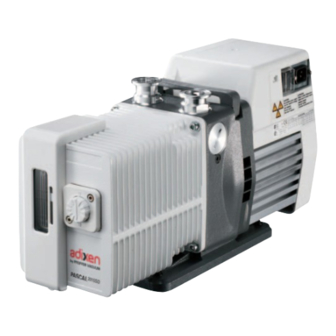
Pfeiffer Vacuum PASCAL Series Operating Instructions Manual
Rotary vane pumps 33 to 63 m3/h
Hide thumbs
Also See for PASCAL Series:
- Operating instructions manual (71 pages) ,
- Maintenance instructions manual (45 pages) ,
- Maintenance instruction (31 pages)
Table of Contents

















Need help?
Do you have a question about the PASCAL Series and is the answer not in the manual?
Questions and answers